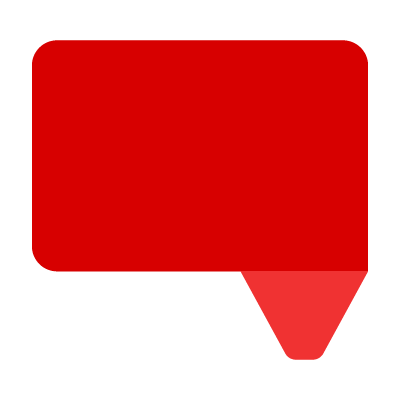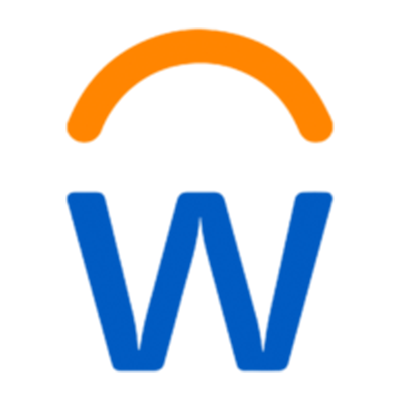Professor Mahnaz Moallem on the role of assessment (part two)
The second installment of our two-part interview with Mahnaz Moallem, Professor of Instructional Technology at UNCW.
A celebrated pioneer in the field of STEM education and assessment research, Professor Mahnaz Moallem is a voice worth listening two. In the second of our two-part interview (you can read part one here), we spoke to Professor Moallem about the role of technology in education, women in STEM, and the future of learning.
Twenty-first-century learning
Learnosity
Your research maintains that twenty-first-century learning needs to have a stronger focus on discovery, critical thinking, and integrated assessment. As author Steve Denning writes, the “goal needs to shift from one of making a system that teaches children a curriculum more efficiently to one of making the system more effective by inspiring lifelong learning in students.”
How do you think this methodology will affect future generations vs the methodology we have now?
Prof. MM
I think we need a new and breakthrough model of learning that uses inquiry-based, problem-based, project-based learning, and utilizes generative and interactive technology. The new model will look very different from what we practice now.
When using this model, the learning process begins with computer-supported assessment systems that evaluate learners’ current understanding of target learning outcomes. The results of this initial assessment are then reviewed by a core teacher who, in consultation with a group of advisory teachers, forms student groups and assigns each group to a different project/problem (with different levels of complexity). Student groups then begin their inquiry under the supervision of the teacher mentor. Live, community-based/onsite experiential learning is expected, as students work on their focused scientific, inquiry-based projects/problems. The live instruction is augmented with immersive, learner-focused, personalized (self-paced) learning of specific subject areas and with the support of computer-based artificial tutors/agents.
Sophisticated learning technologies are needed for both developing and implementing complex scientific, project/problem-based learning tasks and for building personalized learning. Share on XThe role of assessment in this breakthrough model is to improve learning and thinking processes. It does this by helping to prepare learners to function in real-world situations; improving both learning and instruction; assisting learners to self-assess and self-regulate their own learning; and supporting learners to document evidence of their own learning process.
To achieve these goals, sophisticated learning technologies are needed for both developing and implementing complex scientific, project/problem-based learning tasks and for building personalized learning. The learning technologies that are needed will provide both learning and assessment opportunities. As learners go through the processes of solving a problem, playing a learning game, developing a simulation or modeling a phenomenon using generative, cognitive engaging learning tools, their learning processes are documented and used as a formative assessment. Log files are capturing learners’ decision-making and tracking learner progression toward achieving the competencies.
Learnosity
What steps can we take to reach this goal?
Prof. MM
This model requires a lot more emphasis on competency-based education and integrative learning experiences in which skills, abilities, and knowledge interact to form a combination of learning germane to the task.
The learning experiences are defined by key learning tasks as well as a framework for learner progression toward the desired outcome. In other words, learners begin their learning experiences on the basis of where they are on a set of predefined learning expectations and follow them along the entire sequence they need to succeed. The faculty/instructors/teachers are ready to provide just-in-time scaffolding and guidance and emotional, social support in addition to embedded scaffolds and guidance in the technology tools.
Technology-rich learning
Learnosity
You have long maintained that assessment should live in technology-rich learning environments. Innovative forms of assessment, such as simulation, gaming, e-portfolio, computer adaptive, and so on, are taking assessment to another level.
What role do you think technology will play in assessment in the twenty-first century? Does it open up greater possibilities for evaluating the learner’s full range of cognitive abilities?
Prof. MM
I think technology will play a crucial role in assessment in the twenty-first century. Advances in analytic tools and immersive learning environments (e.g., virtual reality, augmented reality, and digital games) and techniques toward the assessment, measurement, and support of knowledge and skills will result in greater emphasis on personalized learning. Thus, more focus will be placed on the competency model of assessment and identification of what collection of knowledge, skills and other attributes of learning should be assessed.
Additionally, given that the advancement of technology and opportunities for creating an evidence-based, progression model of assessment allow students’ interactions with, and responses to, a given problem, it is more likely that assessment will function much closer to classroom teaching and learning and play a more powerful role in fostering academic achievement. We will also see the possibility of incorporating different, kinds of data on student progress and school performance into accountability measures. In other words, accountability measures may no longer need to depend on a limited and indirect outcome measures such as tests or self-reports. They could take a big data approach, combining from a number of different data sources to gauge the performance of students, schools and the teachers over time.
With the advancement of technology ... it is more likely that assessment will function much closer to classroom teaching and learning and play a more powerful role in fostering academic achievement. Share on XAlso, currently, difficult-to-measure outcomes such as creativity, critical thinking, collaboration, engagement, social and emotional skills can also be determined using multiple sources of data. Games, simulation, and modeling will allow us to more accurately measure higher order thinking skills. These adaptive learning technologies could also capture decisions the student makes and based on perceived mastery, alter the learning path of the student.
Women in STEM
Learnosity
Your work in encouraging female participation in STEM was recognized by INSIGHT Into Diversity magazine, which included you among its “100 Inspiring Women in STEM” aware. This is an area we recently wrote about on our blog. Research shows a girl’s interest in STEM starts to decline during middle and high school.
Why do you think it’s important for girls and women to pursue degrees and careers in the STEM?
Prof. MM
I think the lack of diversity; particularly the lack of women’s presence in scientific workforce particularly in computer science, engineering and physics is concerning and is an equity issue.
It concerns me for several reasons. First, there are more jobs in STEM fields than in any other fields, so when women do not pursue degrees in the STEM, they have less chance of finding jobs. Secondly, most high pay jobs are in STEM areas. Thus women will have less chance of having high-paying jobs, particularly in information technology. Furthermore, a lack of female participation in the scientific workforce results in considerable talent going missing from the innovation enterprise, which impacts the global economy and raises the status of women both in developed and developing countries. This continuous trend also does not help to establish equity and remove the existing stereotypes and gender inequality in the labor force.
A lack of female participation in the scientific workforce results in considerable talent going missing from the innovation enterprise. Share on XLearnosity
How can we as parents, educators, and tech leaders invest in bridging this gap?
Prof. MM
As researchers, we still need to engage in more research to identify the factors that impact women’s participation in the STEM, particularly in specific fields. Current findings point to cultural stereotypes, lack of opportunities for learning computing and computational thinking at middle and high schools, the male-dominated work environment in some fields, being the major factors impacting women’s presence in the STEM fields.
However, my work with middle and high school students suggests that there might be other factors that impact girls’ choice of not selecting certain STEM areas. For example, a group of middle and high school students with whom I have been working with selected the science (nursing, biology, chemistry) areas as their first career choice. When we asked them why they did this, many students indicated that they felt these fields provided the opportunity to help family members and the community. So, I think we may need more in-depth studies with a more diverse group of students to identify culturally embedded factors that could impact girls’ choices.
I think we have to question the existing negative cultural stereotypes and introduce girls to STEM women role models and show them the impact these women have in our society. As teachers, we have to educate girls about their career choices and make them aware of the existing gender inequality and its economic consequences. As parents, particularly as mothers, we should reflect on our own beliefs and perceptions about our girls’ abilities in excelling in STEM fields. As educators and parents, our implicit beliefs and assumptions have a significant impact on children’s career choices and could confirm or reject the existing cultural stereotypes.
As parents, particularly as mothers, we should reflect on our own beliefs and perceptions about our girls’ abilities in excelling in #STEM fields. Share on XAs a STEM professional, I also happen to believe that how the STEM subjects are taught in middle and high schools and colleges and universities has a major impact on girls’ deciding to choose humanities over STEM subjects. Social, emotional, and equity issues – as well as relevancy and value of the integrated knowledge and skills – must be emphasized in STEM courses.










